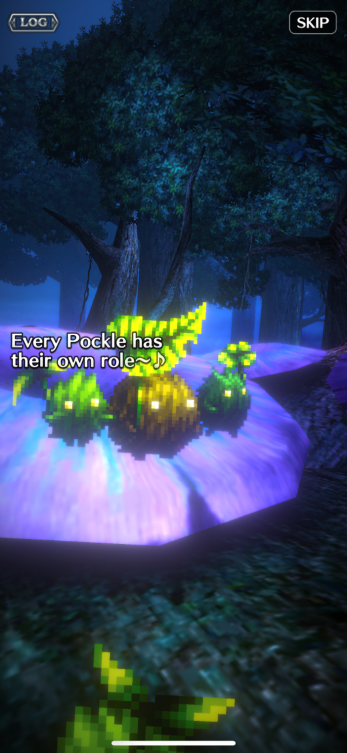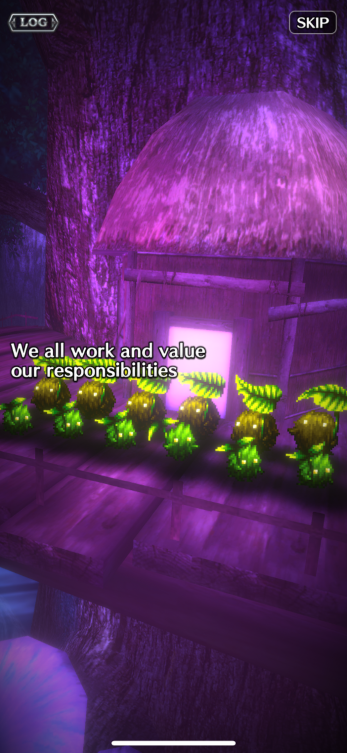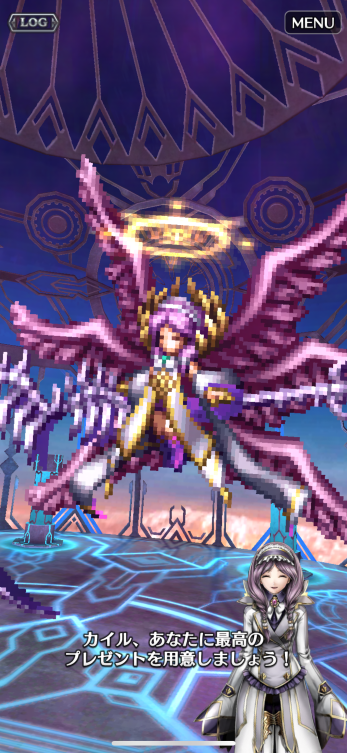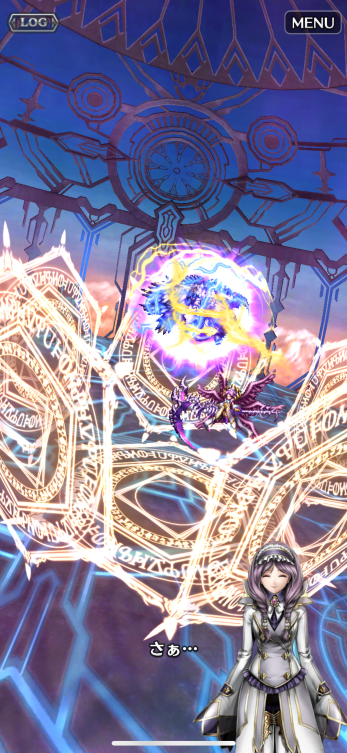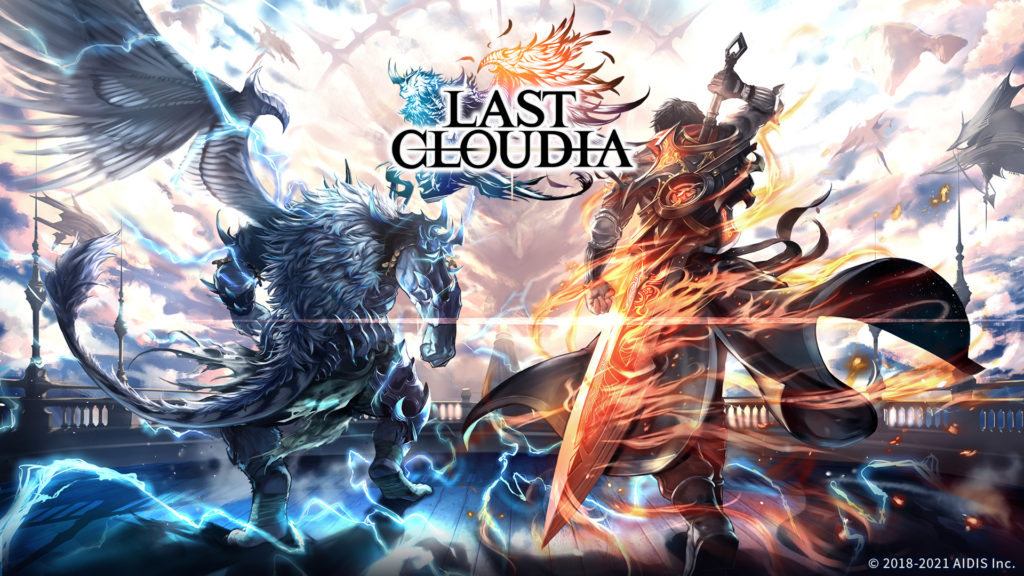
この記事は、gamebizさんに掲載されたインタビュー「音楽はゲームの魅力を引き上げる最重要事項…2.5周年を迎える『ラストクラウディア』早貸氏と音楽制作プロダクションmiuGに聞くゲーム楽曲の重要性」を英訳したテキストになります。
In recent years, the game industry has had an increased demand for games with deep and expansive worlds to attract new users. In order to appeal to a mass player base, other factors aside from gameplay including music and story must be perfectly combined to appeal to a mass player base.
Music is becoming increasingly important for mobile games as well. Games such as “Last Cloudia,” by AIDIS, utilize a full orchestra for parts of their in-game music.
This game’s appeal not only lies in its story and battle system, but also with its high-end cut scenes and music.
G-angle’s music production studio, “miuG,” was heavily involved with the music production for this project. “miuG” was established in 2019 as a production studio specializing in high quality music.
So what importance and influential power does music have in video games?
Here we have a conversation between Hisatoshi Hayakashi of AIDIS and Tetsuya Kobayashi, miuG’s lead producer who was heavily involved in the music production for “Last Cloudia.”
We asked them about their commitment to “Last Cloudia’s” music production as well as the importance of music in video games in general.
The highly acclaimed “Last Cloudia” and it’s commitment to high quality music

AIDIS Inc.
President and Representative Director
Hisatoshi Hayakashi (Photo on the left)
Worked on numerous classic mobile RPGs including “Brave Frontier” and “Final Fantasy Brave Exvius” (*1).
Established AIDIS in 2016, launching “Last Claudia” in April 2019, actively working to expand overseas in 32 countries (*2).
(*1) Engaged in development as Executive Director. Currently distributed by Square Enix.
© 2015-2021 SQUARE ENIX CO., LTD. All Rights Reserved. Developed by Alim Co., Ltd.
(*2) As of October 2021. Including traditional Chinese versions of “Last Cloudia” (for Taiwan, Hong Kong, and Macao) published by Hong Kong-based Boltrend Games.
G-angle Co., Ltd.
“miuG”
Producer/Composer
Tetsuya Kobayashi (Photo on the right)
Producer and composer for “miuG,” the sound production team for G-angle. In charge of music direction, composition and arrangement for “Last Cloudia.”
――:First of all, what are your impressions of the current state of “Last Cloudia”?
Hayakashi: This month marks the two and a half year anniversary of “Last Cloudia”. It’s all thanks to our users.
It’s been two and a half years since we launched it but new users keep coming in, and we are still preparing several new events, so please stay tuned.
――:It’s amazing that new users are still joining.
Hayakashi: We are very grateful. I think that there are many parts of “Last Cloudia” that are difficult for new users to play.
We want to try to make these parts of the game easier to play, and we also want to create events that will surprise experienced players who have been playing for a long time. That’s what we’re planning currently.
As for the story, the first part ended when we celebrated the second anniversary of the game, and now the second part has begun. We’ve been steadily working on the story as well as the music, so I hope you’ll look forward to it.
――:The game was launched in 2019, correct? That’s really great, considering that only a few original titles continue to be supported for this long.
Hayakashi: Thanks to all of you, really. There are a lot of smartphone games nowadays that get cancelled early, don’t you think? I’m very happy that we were able to celebrate this game’s two and a half year anniversary.
Kobayashi: It’s really amazing.
Hayakashi: The game’s music has been highly praised by users since launch, which made me very happy. Tetsuya Kobayashi has been supporting us for a long time.
Kobayashi: I’m happy to have come across such a good game… However the music supervision for “Last Cloudia” was very strict. There’s this saying about the carrot and the stick – the carrots were sweet but the stick hurt. (Laughs)
――:Both the carrot and the stick were sharpened, huh? (Laughs)
Kobayashi: When things are going well, I am happy to hear someone say “It’s an iconic song!” or “It’s amazing!”. But when I hear “This is terrible”, or “It’s not good at all”, it’s pretty rough.
The weight of a word or a sentence is huge. But you can really feel how much thought goes into this, so I try to make songs as good as possible without making any compromises.
Hayakashi: I imagine the direction and music in my head when I write a script.
――:From the moment you create the scenario you’re also thinking about the music and visuals.
Hayakashi: I have a structure in mind – for example I want the song to build up in the last minute, and at around a minute and a half, I want the song to inspire a certain type of emotion.
So I ask for a song that overlaps with the story as I’m reading it. Even if I make a very abstract request like, “I want to make it more exciting here…”, Mr. Kobayashi always comes up with something perfect (laughs).
――:Being able to compose music while reading a script is pretty amazing, huh?
Hayakashi: I think everyone thinks about this when writing scripts, not only for video games but also for anime and movies.
――:I see. You mentioned that you imagine the user’s emotions when making the script?
Hayakashi: Yes. There are many things that make up a story, such as the director’s style and the graphics, but it is the script and the music that inspire emotion. So if these two are even a little weak, the story will not be emotionally engaging.
That’s why I want to put a lot of effort into the story and music. When it’s done, the impact of the scene will be multiplied dozens of times over.
Kobayashi: When we receive an order for music for a video game, in many cases the game screen hasn’t been completed yet, so we work with a limited amount of information, like keywords or scenes. When I listen to the finished music by itself, I think it’s a great piece of music, but when I listen to it with the actual story in the game, it’s even more impressive.
So I feel that there is a strong synergy between the music and the story. If you read the scenario by itself or listen to the music by itself, it may not make you cry. But if you put the two together, it can make you cry and laugh, and I really felt that in “Last Cloudia”.
――:I think some smartphone games have started to put more effort into the script and music recently.
Hayakashi: Music has such a great power. It’s the most important thing to me.
The memories you have of games you played in the past are linked to the music. Actually, if you think of a scene of the game you like the most, you will probably also hear the music in your head.

――:It’s true that for games that are popular in Japan and for games that are world famous, if you think of a scene, you’ll also think of the music.
Hayakashi: When the music comes on, all the stories and images come to mind. That’s how powerful music is.
These days wireless earphones are getting more popular, and people can feel immersed in another world in the train with just a smartphone, but music is also becoming an incredibly important part of the process.
Just by listening to the music, it becomes easier to immerse yourself in the world of the game. In my opinion it’s one of the most important things in RPGs.
――:Recently I feel that there’s a lot more smartphone users who want to immerse themselves in another world. That’s perhaps the reason why they are looking for a more immersive experience that combines scenario and music.
Kobayashi: “Last Cloudia” shocked me with how grand of a story could be expressed in a mobile game. It’s easy to become attached to the characters and I’m really curious about what happens next.
As for the music production side, alot of Mr. Hayakashi’s orders start to make sense as we progress through the story. I’ll be like “Oh, that’s why we couldn’t use that song!” and it’s almost like solving a mystery. (Laughs)
Hayakashi: I’m sure there were alot of times you wish I had said something earlier, right! (Laughs)
Kobayashi: But there were also some times where we thought a song would only be used in one area, only to discover it in another area as well. It always fit the scene.
For example, we’d be using the Pockle theme song in places where Pockle didn’t appear, and it was fun seeing how these different songs were used.
Hayakashi: Mr. Kobayashi has quite a wide repertoire of songs. I admire your ability to write both comical songs as well as inspirational and serious songs.
Kobayashi: Thank you very much. I think that’s the power of having a team. It would be difficult to do this all on my own, so I try my best to organize the best party I can, like “Person B would be a perfect combination with Artist A.”
I really owe it to the support I get from my team.
Creating the music for “Last Cloudia” through retakes upon retakes
――:What made you decide to ask Mr. Kobayashi and “miuG” to compose music for you in the first place?
Hayakashi: I guess it started when we were creating the world for “Last Cloudia” and were wondering what to do about the music.
It’s a story-driven game, so of course the music is a fundamental aspect of the story. However, there’s also many side quests, so music and other sub-content needs to be comical.
I was searching for someone who could handle all of these different styles in a way that I imagined.
One day, I came across the G-angle website, and listened to about three sample songs.
After listening to a few songs, I was really impressed.
I contacted them right away, introduced myself, and asked them to make a sample song for me in a certain style.
… It was definitely not what I was looking for at first. I was like what is this!? (Laughs)
――:(Laughs)
Kobayashi: At first, I had a hard time understanding the main points you wanted to express in the music. (Laughs)
After that, we met again and had a thorough discussion on the type of musical expression and direction they wanted to take with “Last Cloudia.”
It was a 30~40 song order, so we both had to be convinced that these were the perfect songs at the initial stages or the project would fall apart. We had a lot of pressure, but as we sorted through Mr. Hayakashi’s feedback we started to get a better idea of what factors to keep in mind.
Over time, Mr. Hayakashi’s feedback went from “No, that’s not it.” to “Wow, this is really good!” Our production team began getting the hang of it, and we made quick progression after that.
That being said, there are still some songs I struggle with. The most recent song I was in charge with took a really long time to complete.
Hayakashi: Well that’s because it was a really difficult song! (Laughs)
Kobayashi: It was around the boss battle in the second part of the game. I was in charge of the song playing most throughout the game, and it took 7 takes to complete! (Laughs)
――:You’re quite particular with your song choices, aren’t you?
Hayakashi: Battles take up roughly 80% of the total playtime in RPGs. Since this music is being played all the time, there was no room for compromise. That’s why we didn’t hesitate with our feedback, and Mr. Kobayashi kindly responded to all of our requests.
Kobayashi: In any type of production, there is always bound to be retakes. However, you always need to make sure to never give the same kind of retake twice. In my experience, the song will never be accepted unless you drastically change the song, so I was very thorough about that.
I’m happy to say this resulted in great music in the end.
Hayakashi: If you include all the retakes, there were probably close to 100 songs.
――:That’s quite a lot of songs. So you aren’t just doing as you’re told, but are actually working together to make ideas that fit your creative direction?
Hayakashi: We currently have over 80 songs in the game, but to be honest, it’s not always best to have a huge number of songs. The more we increase the song count, the less memorable they will be for our players, so it’s actually best to use the same songs for multiple scenes.
… You end up just wanting to hear these great songs even more. (Laughs)
Kobayashi: Some people might even wonder why there are so many songs for boss battles. It’s like “how many last boss songs are there!?” (Laughs)
For example with the Lily battle, it was almost like a compilation of SS-class boss battle songs.
Hayakashi: Sorry for the horrible instructions. I’d be telling you this song was for a last boss, even though there was another song for a final boss after that. (Laughs)
Kobayashi: True, there were a lot of bosses. (Laughs) I could tell from the beginning that each song was created with a special idea for an important scene.
What is “miuG,” the music production group designed to bring out the best in games?
――:Would you mind telling us how you started the “miuG” music production studio?
Kobayashi: I was originally a musician myself, playing in backup bands for J-pop artists.
However, I had a strong desire to work in music production and songwriting, and this desire didn’t go away even as I reached my thirties, so I decided to completely change direction and take the plunge.

At the time, the representative of our company mentioned that he wanted to expand the music team. I thought it might be interesting to utilize my contacts in the music industry to help game creators, and decided to start the music production department, the predecessor of miuG.
――:So that’s how Mr. Kobayashi’s background in music and G-angle crossed paths.
Kobayashi: That was over 10 years ago now. That was right around the time when old cell phones were being replaced by smartphones, and full-fledged music started to be played on them.
I always believed that a day would come when orchestras, theme songs, and live performances would be playable on smart phones, and thanks to my background we were approached by many game manufacturers.
Not only in the game industry, but many companies from various industries both in and out of Japan have worked alongside miuG to this day.

――:So that’s how you got started and eventually became involved in the production of “Last Cloudia.” Is there anything special you always try to keep in mind when creating music with miuG?
Kobayashi: This may sound cliché, but communication is key, especially in the beginning. Ever since the pandemic, communication has gotten a bit more difficult, so if Hayakashi and I weren’t able to maintain such great communication, music production for “Last Cloudia” might have been impossible.
Hayakashi: I found that it was sometimes easier to create music after going out for drinks every now and then and talking about video games and music.
――:Communication has also become a big issue for game production. Working remotely can increase efficiency but it makes communication a bit more difficult.
Hayakashi: Sometimes words aren’t enough to convey the passion.
Kobayashi: You’re right. It all depends on whether or not you can create a basis for mutual understanding…
If we can communicate and get to know each other on a deeper level, I can understand that even when Mr. Hayakashi says that our song isn’t good, he does so out of his love for the music.
But without proper communication, there would definitely be lapses in our mutual understanding and we’d have to compromise somewhere down the line.
Hayakashi: It’d make me into just some angry guy. (Laughs)
――:Mr. Hayakashi, what are the strengths and characteristics of “miuG” from your point of view?
Hayakashi: As I mentioned earlier, being able to handle a wide variety of genres is a very strong point, and makes it easier for me to point out when I don’t particularly like a song.
Whenever I ask them to do something, they come up with drastic changes which is why I trust them as a partner in game production.

Also, they are really fast, coming up with new ideas really quickly which increases the chances of making a great song.
I also personally think that they create great melodies. I’m so impressed with the melodies that I’m worried that they’ll run out of them some day.
Kobayashi: I’m so happy to hear that. (Laughs)
Hayakashi: That’s how much I trust you.
――:It’s amazing that you have built such a trusting relationship. There are definitely some difficulties that come with communicating with other creators, aren’t there? It’s easy to find yourself clashing.
Hayakashi: It’s great that we are willing to come together and talk about these things. Some creators, once they build a good track record and become well known, become stubborn and don’t listen to our opinions.
Mr. Kobayashi himself has a lot of experience, but I can always trust that he will create great music that fits our work without letting his pride get in the way.
The ever-evolving “Last Cloudia” – Wanting people to experience the appeal of music
――:Can you tell us a bit about the future of “Last Cloudia” and the “miuG” production studio?
Hayakashi: With the two and a half year anniversary coming up, the numbers of stories and characters will continue to increase. There are many things to see, but more characters also means more theme songs.
I’m sure we’ll be making more and more new songs in the future, so please stay tuned.
Whether you’re currently playing “Last Cloudia” right now, or plan on playing in the future, I hope that you play with earphones on.
The music in “Last Cloudia” was created in conjunction with the text. So actually, although you can skip through the text, doing so will cause everything to be out of sync with the song.
So I’d like for our players to enjoy the game while refraining from skipping through the text as much as possible. (Laughs)
I think you’ll be able to enjoy the story at least three times more, so please keep that in mind!
Kobayashi: I hope to create music for the second part of the game that will double or even triple the excitement of the story.
――:Thank you very much. Could you give us a few last words?
Hayakashi: Thanks to all of you, we successfully celebrated our two and a half year anniversary. From now on, “Last Cloudia” will continue to evolve not only in terms of story, but features as well.
We’ll be adding events and features that are user-friendly for new players, as well as new features that can be enjoyed by existing users as well. I hope you will continue to enjoy “Last Cloudia” as it continues to evolve. Lots to look forward to!
Kobayashi: At miuG, the music we create is not so much about delivering standalone music, but rather about creating music to enhance and further inspire the creative work of others such as the story and cut-scenes.
In this day and age, music is consumed at a very fast pace, or you could even say that there’s so much content that it’s getting saturated. We at miuG will do our best to create music that will be remembered by everyone, even if only for a little while.
We look forward to bringing excitement to music production, so we hope that you continue to support us.
――:Thank you very much.
This article was translated with permission from gamebiz, Inc.
miuG Official HP:https://sound.g-angle.co.jp/
Official Twitter: https://twitter.com/miuG_0367217923
miuG produced by G-angle Official HP:https://www.g-angle.com/
Last Cloudia Official HP: https://www.lastcloudia.com/en/
Official Twitter: https://twitter.com/lastcloudiaen


